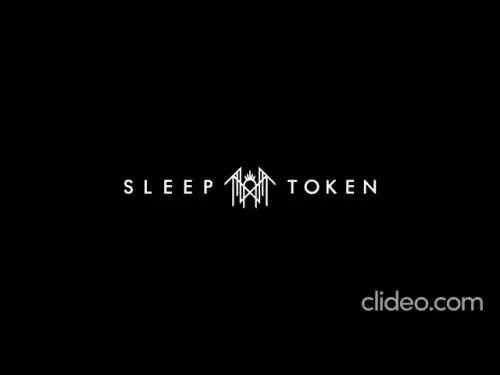-
 Bitcoin
Bitcoin $113200
1.54% -
 Ethereum
Ethereum $4368
1.43% -
 XRP
XRP $3.022
4.23% -
 Tether USDt
Tether USDt $0.0000
-0.01% -
 BNB
BNB $883.5
0.92% -
 Solana
Solana $219.5
5.29% -
 USDC
USDC $0.9997
-0.02% -
 Dogecoin
Dogecoin $0.2411
3.66% -
 Cardano
Cardano $0.8908
5.48% -
 TRON
TRON $0.3349
0.94% -
 Hyperliquid
Hyperliquid $54.50
8.93% -
 Chainlink
Chainlink $23.73
5.54% -
 Ethena USDe
Ethena USDe $1.001
-0.01% -
 Sui
Sui $3.602
5.47% -
 Stellar
Stellar $0.3861
5.90% -
 Bitcoin Cash
Bitcoin Cash $585.1
-1.13% -
 Avalanche
Avalanche $26.09
4.37% -
 Hedera
Hedera $0.2325
5.06% -
 UNUS SED LEO
UNUS SED LEO $9.549
-0.23% -
 Litecoin
Litecoin $114.2
1.13% -
 Cronos
Cronos $0.2502
-2.95% -
 Toncoin
Toncoin $3.134
1.24% -
 Shiba Inu
Shiba Inu $0.00001307
4.10% -
 Polkadot
Polkadot $4.148
3.50% -
 Uniswap
Uniswap $9.759
3.47% -
 Ethena
Ethena $0.8495
11.24% -
 World Liberty Financial
World Liberty Financial $0.2188
3.76% -
 Dai
Dai $0.9997
-0.03% -
 Monero
Monero $271.7
0.21% -
 Aave
Aave $309.2
2.95%
What is the difference between Bollinger Bands and moving averages? Which one is more suitable for short-term trading?
Bollinger Bands measure volatility and potential price extremes, while moving averages focus on trend direction, both useful for short-term crypto trading.
May 21, 2025 at 03:07 pm
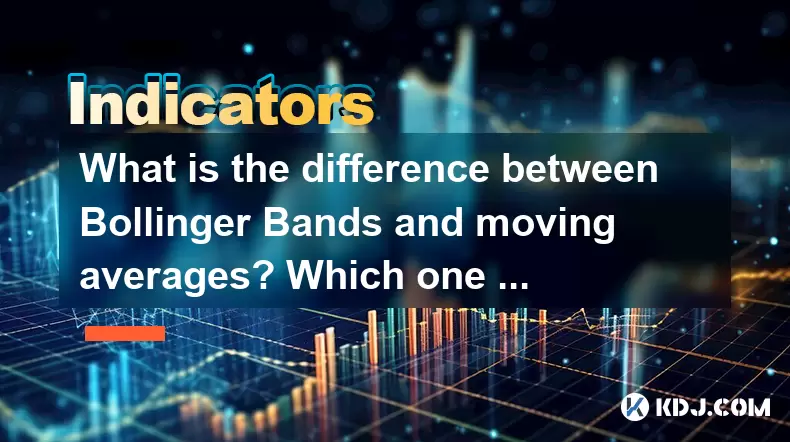
Bollinger Bands and moving averages are two of the most popular technical analysis tools used by traders in the cryptocurrency market. Each tool serves a unique purpose and offers different insights into market trends and volatility. In this article, we will explore the differences between Bollinger Bands and moving averages, and discuss which tool might be more suitable for short-term trading.
Understanding Bollinger Bands
Bollinger Bands are a technical analysis tool developed by John Bollinger in the 1980s. They consist of three lines: a middle band, which is a simple moving average (SMA) of the price over a specified period, and two outer bands that are typically set two standard deviations away from the middle band. The outer bands adjust dynamically with the volatility of the price.
Bollinger Bands are used to measure market volatility and identify potential overbought or oversold conditions. When the price touches or crosses the upper band, it may indicate that the asset is overbought, and when it touches or crosses the lower band, it may indicate that the asset is oversold. Additionally, the bands can narrow or widen, indicating periods of low or high volatility, respectively.
Understanding Moving Averages
Moving averages are another fundamental tool in technical analysis. They help smooth out price data to identify the direction of the trend over a specified period. There are several types of moving averages, but the most commonly used are the simple moving average (SMA) and the exponential moving average (EMA).
The simple moving average (SMA) calculates the average price over a specified number of periods. For example, a 50-day SMA would add up the closing prices of the last 50 days and divide by 50. The exponential moving average (EMA), on the other hand, gives more weight to recent prices, making it more responsive to new information.
Moving averages are used to identify trend direction and potential trend reversals. When the price is above the moving average, it indicates an uptrend, and when the price is below the moving average, it indicates a downtrend. Crossovers between different moving averages (e.g., a short-term moving average crossing above a long-term moving average) can signal potential buying or selling opportunities.
Differences Between Bollinger Bands and Moving Averages
The primary difference between Bollinger Bands and moving averages lies in their purpose and the information they provide. Bollinger Bands focus on market volatility and potential overbought or oversold conditions, while moving averages focus on trend direction and potential trend reversals.
Bollinger Bands provide a more comprehensive view of the market by incorporating both a moving average and volatility indicators. The middle band of Bollinger Bands is a moving average, but the addition of the upper and lower bands allows traders to gauge market volatility and potential price extremes. In contrast, moving averages provide a simpler view of the market trend but do not offer insights into volatility.
Suitability for Short-Term Trading
When it comes to short-term trading, both Bollinger Bands and moving averages can be useful, but their effectiveness depends on the trader's strategy and the specific market conditions.
Bollinger Bands are particularly useful for short-term traders who focus on volatility and potential price reversals. The bands can help identify periods of high volatility, which often precede significant price movements. Traders can use Bollinger Bands to set entry and exit points based on the price touching or crossing the bands. For example, if the price touches the lower band, it might be a signal to buy, anticipating a potential upward reversal.
Moving averages, on the other hand, are more suited for short-term traders who focus on trend-following strategies. Short-term moving averages, such as the 10-day or 20-day SMA or EMA, can help traders identify short-term trends and potential trend reversals. For example, a trader might use a short-term moving average to enter a trade when the price crosses above the moving average, indicating a potential uptrend.
Using Bollinger Bands for Short-Term Trading
To use Bollinger Bands effectively for short-term trading, traders can follow these steps:
- Identify the Bollinger Bands settings: Typically, the default settings are a 20-day SMA for the middle band and two standard deviations for the outer bands. However, traders can adjust these settings based on their trading strategy and the specific cryptocurrency they are trading.
- Monitor price action relative to the bands: Pay attention to when the price touches or crosses the upper or lower band. A touch or cross of the upper band may indicate an overbought condition, while a touch or cross of the lower band may indicate an oversold condition.
- Look for volatility squeezes: A narrowing of the bands indicates low volatility, which often precedes a period of high volatility and significant price movement. Traders can use this signal to prepare for potential breakouts.
- Set entry and exit points: Use the bands to set entry and exit points. For example, a trader might enter a long position when the price touches the lower band and exit when the price touches the upper band.
Using Moving Averages for Short-Term Trading
To use moving averages effectively for short-term trading, traders can follow these steps:
- Choose the right moving average: For short-term trading, shorter-term moving averages such as the 10-day or 20-day SMA or EMA are more suitable. The choice between SMA and EMA depends on the trader's preference for responsiveness to recent price changes.
- Identify trend direction: Use the moving average to determine the direction of the trend. If the price is above the moving average, it indicates an uptrend, and if the price is below the moving average, it indicates a downtrend.
- Monitor moving average crossovers: Look for crossovers between different moving averages. For example, a short-term moving average crossing above a long-term moving average (a 'golden cross') may signal a potential buying opportunity, while a short-term moving average crossing below a long-term moving average (a 'death cross') may signal a potential selling opportunity.
- Set entry and exit points: Use the moving average to set entry and exit points. For example, a trader might enter a long position when the price crosses above the moving average and exit when the price crosses below the moving average.
Combining Bollinger Bands and Moving Averages
Traders can also combine Bollinger Bands and moving averages to enhance their short-term trading strategy. By using both tools together, traders can gain a more comprehensive understanding of market trends and volatility.
- Use moving averages to identify the trend: Start by using a moving average to determine the overall direction of the trend. This can help filter out potential trading signals that go against the prevailing trend.
- Use Bollinger Bands to identify entry and exit points: Once the trend is identified, use Bollinger Bands to set entry and exit points. For example, in an uptrend, a trader might enter a long position when the price touches the lower band and exit when the price touches the upper band.
- Monitor volatility squeezes: Pay attention to periods of low volatility indicated by narrowing Bollinger Bands. These periods can precede significant price movements, providing potential trading opportunities.
Frequently Asked Questions
Q1: Can Bollinger Bands be used to predict cryptocurrency prices?Bollinger Bands can provide insights into potential price movements based on market volatility and overbought or oversold conditions. However, they are not a predictive tool and should be used in conjunction with other technical analysis tools and market indicators.
Q2: How do I choose the right period for a moving average in cryptocurrency trading?The choice of period for a moving average depends on the trader's time frame and trading strategy. For short-term trading, shorter periods such as 10 or 20 days are more suitable, while for longer-term trading, longer periods such as 50 or 200 days may be more appropriate.
Q3: Are Bollinger Bands more effective in volatile markets?Bollinger Bands are particularly useful in volatile markets because they adjust dynamically to changes in volatility. In highly volatile markets, the bands will widen, providing clearer signals for potential overbought or oversold conditions.
Q4: Can I use both Bollinger Bands and moving averages on the same chart?Yes, traders can use both Bollinger Bands and moving averages on the same chart to gain a more comprehensive view of the market. By combining these tools, traders can identify trends, volatility, and potential entry and exit points more effectively.
Disclaimer:info@kdj.com
The information provided is not trading advice. kdj.com does not assume any responsibility for any investments made based on the information provided in this article. Cryptocurrencies are highly volatile and it is highly recommended that you invest with caution after thorough research!
If you believe that the content used on this website infringes your copyright, please contact us immediately (info@kdj.com) and we will delete it promptly.
- Aethir Price Check: Smart Money Bails, Correction Ahead?
- 2025-09-09 16:25:13
- Tom Lee's Bold Bitcoin Prediction: $200,000 by 2025?
- 2025-09-09 16:25:13
- Ruvi AI's Presale: Is This Your Ticket to Six Figures?
- 2025-09-09 16:30:12
- Dogecoin Price Prediction: Whale Attention and the $DOGE ETF Buzz
- 2025-09-09 16:30:12
- Crypto Updates, FxWirePro, Key Updates: Decoding the Latest Trends (September 2025)
- 2025-09-09 16:35:13
- BONK Price Surges: Bulls Eye $0.000028 Resistance Amidst Corporate Backing
- 2025-09-09 16:35:13
Related knowledge
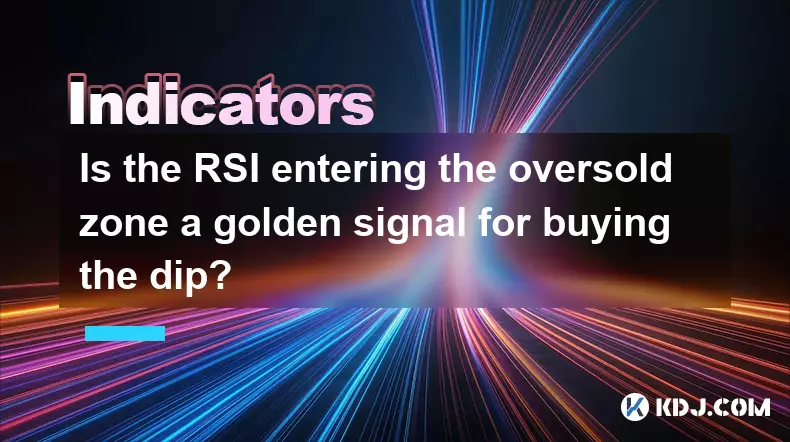
Is the RSI entering the oversold zone a golden signal for buying the dip?
Sep 09,2025 at 02:55pm
Understanding the RSI and Its Role in Crypto Trading1. The Relative Strength Index (RSI) is a momentum oscillator widely used in the cryptocurrency ma...
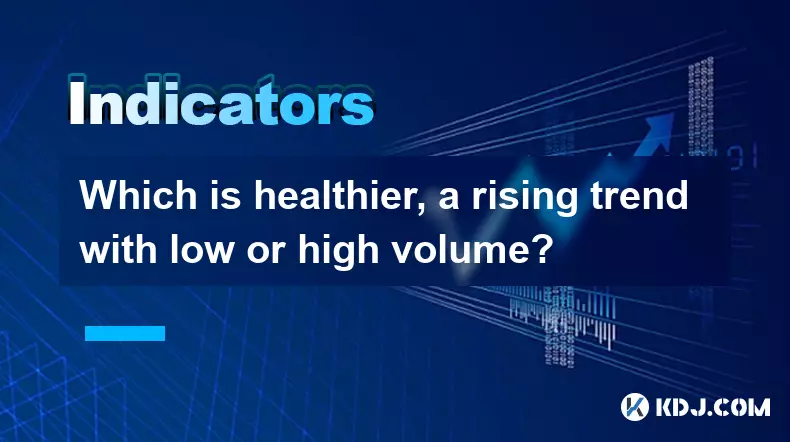
Which is healthier, a rising trend with low or high volume?
Sep 09,2025 at 04:00pm
Understanding Volume in Market Trends1. Volume serves as a critical indicator when analyzing the strength of a rising trend in cryptocurrency markets....
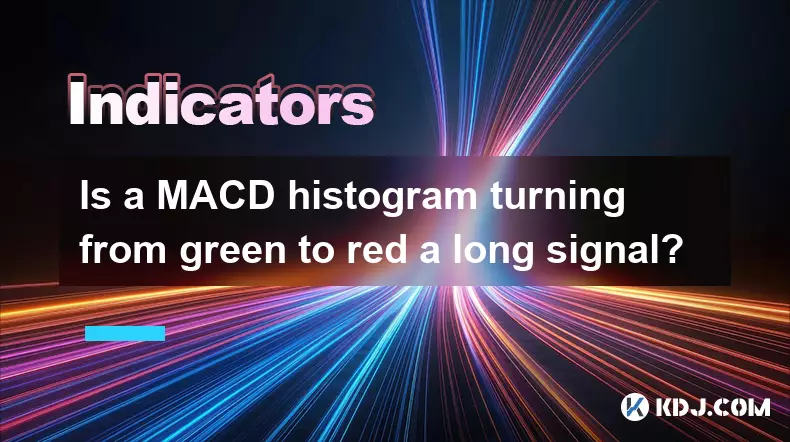
Is a MACD histogram turning from green to red a long signal?
Sep 09,2025 at 01:54pm
Understanding the MACD Histogram in Crypto Trading1. The MACD (Moving Average Convergence Divergence) histogram is a visual representation of the diff...
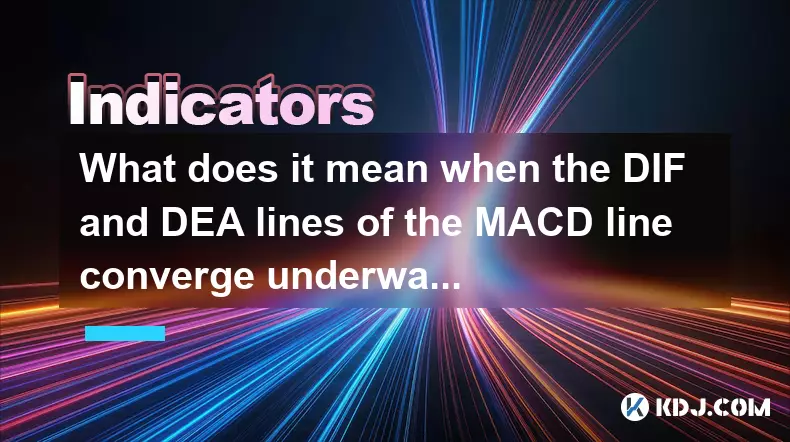
What does it mean when the DIF and DEA lines of the MACD line converge underwater?
Sep 09,2025 at 07:55am
Understanding MACD Components in Bearish Territory1. The MACD indicator consists of three elements: the DIF (Difference), DEA (Signal line), and the M...
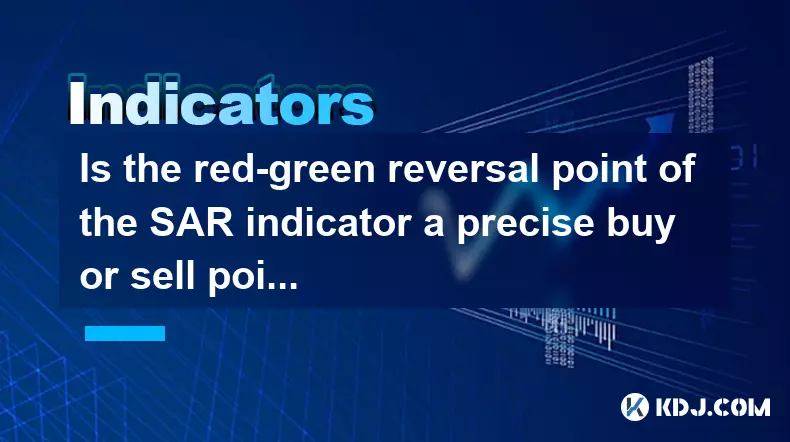
Is the red-green reversal point of the SAR indicator a precise buy or sell point?
Sep 09,2025 at 11:18am
Understanding the SAR Indicator in Cryptocurrency TradingThe SAR (Stop and Reverse) indicator, developed by J. Welles Wilder Jr., is a popular tool us...
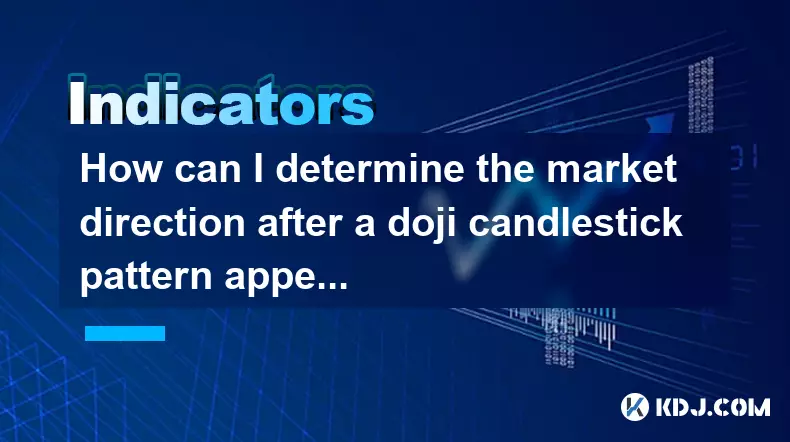
How can I determine the market direction after a doji candlestick pattern appears?
Sep 09,2025 at 05:37am
Understanding the Doji Candlestick in Crypto Markets1. The doji candlestick is a critical formation that signals indecision between buyers and sellers...

Is the RSI entering the oversold zone a golden signal for buying the dip?
Sep 09,2025 at 02:55pm
Understanding the RSI and Its Role in Crypto Trading1. The Relative Strength Index (RSI) is a momentum oscillator widely used in the cryptocurrency ma...

Which is healthier, a rising trend with low or high volume?
Sep 09,2025 at 04:00pm
Understanding Volume in Market Trends1. Volume serves as a critical indicator when analyzing the strength of a rising trend in cryptocurrency markets....

Is a MACD histogram turning from green to red a long signal?
Sep 09,2025 at 01:54pm
Understanding the MACD Histogram in Crypto Trading1. The MACD (Moving Average Convergence Divergence) histogram is a visual representation of the diff...

What does it mean when the DIF and DEA lines of the MACD line converge underwater?
Sep 09,2025 at 07:55am
Understanding MACD Components in Bearish Territory1. The MACD indicator consists of three elements: the DIF (Difference), DEA (Signal line), and the M...

Is the red-green reversal point of the SAR indicator a precise buy or sell point?
Sep 09,2025 at 11:18am
Understanding the SAR Indicator in Cryptocurrency TradingThe SAR (Stop and Reverse) indicator, developed by J. Welles Wilder Jr., is a popular tool us...

How can I determine the market direction after a doji candlestick pattern appears?
Sep 09,2025 at 05:37am
Understanding the Doji Candlestick in Crypto Markets1. The doji candlestick is a critical formation that signals indecision between buyers and sellers...
See all articles

























